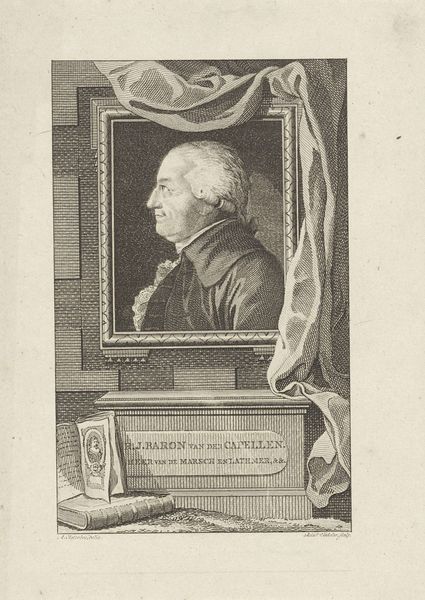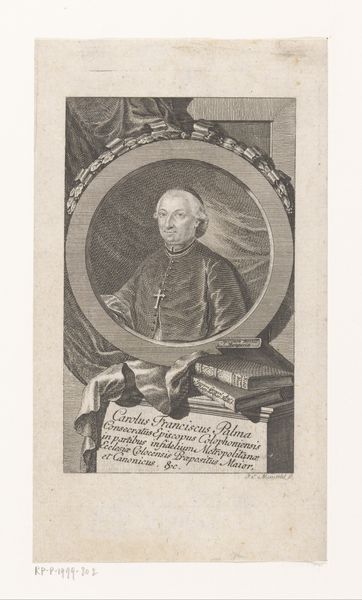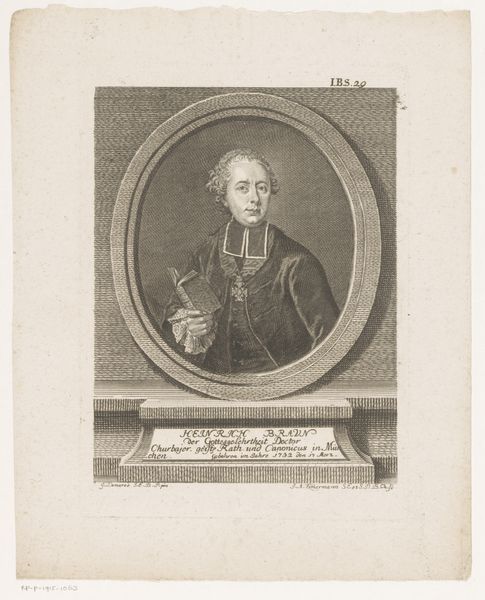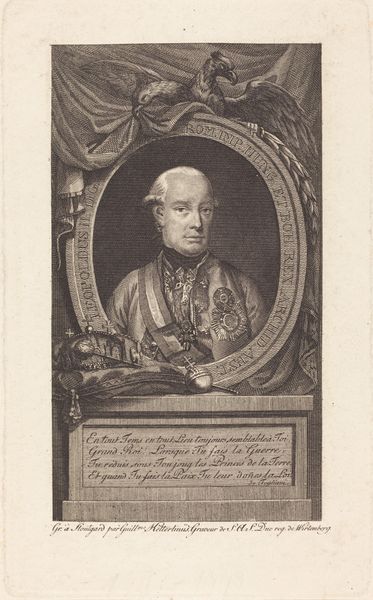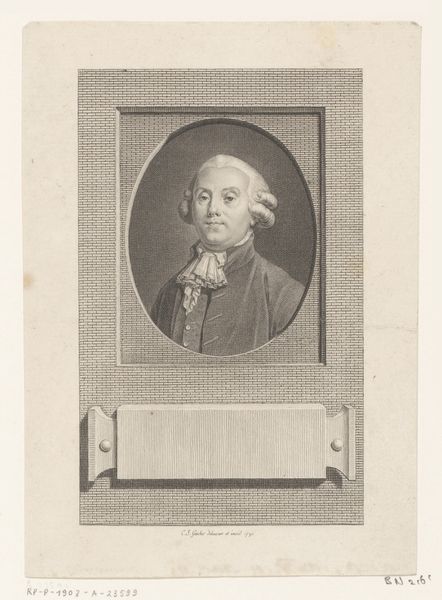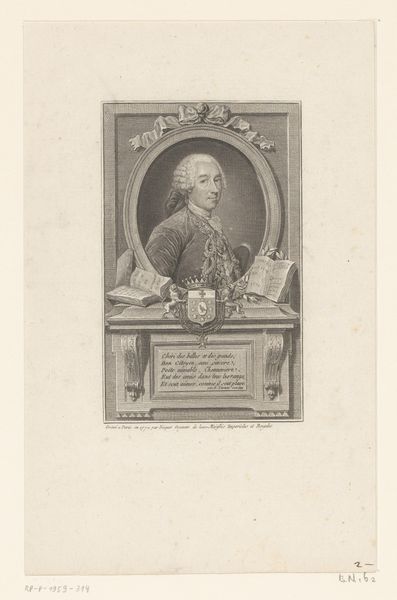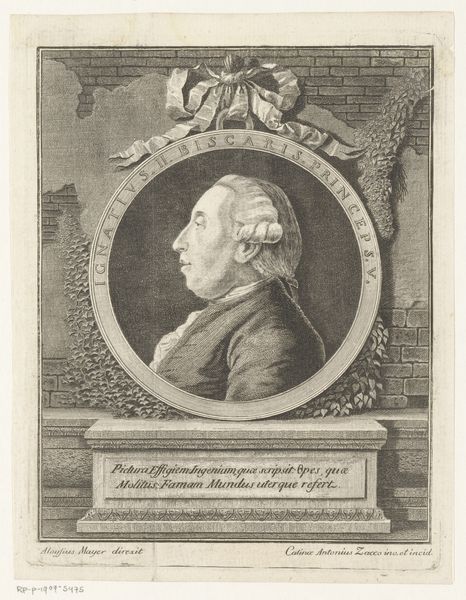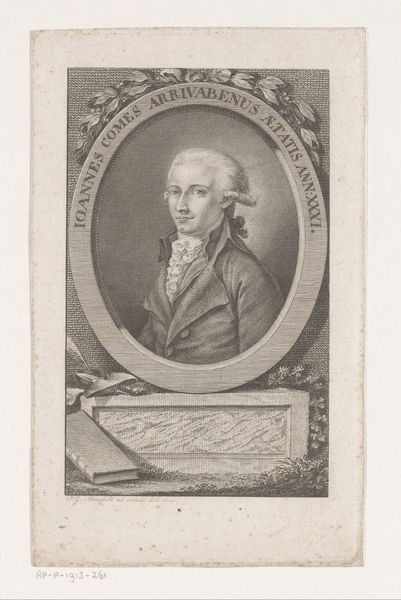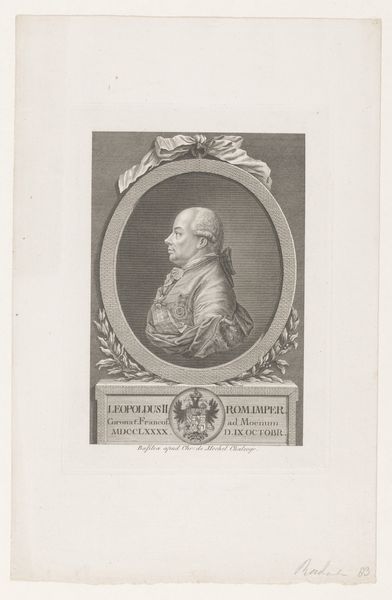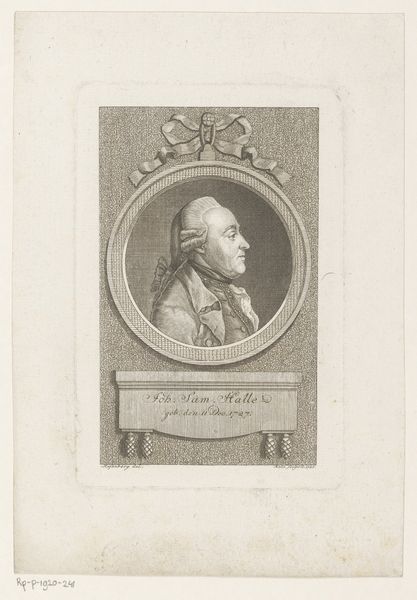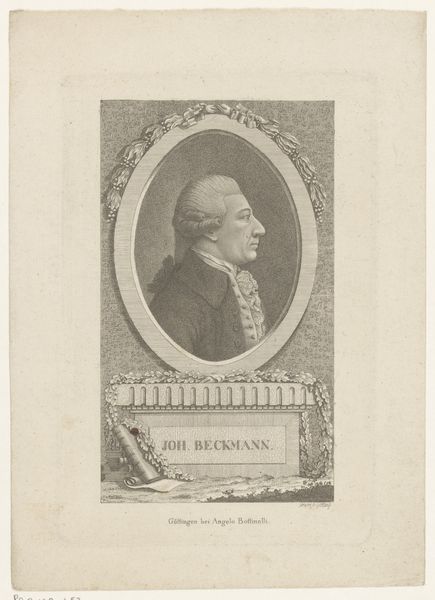
Dimensions: height 140 mm, width 101 mm
Copyright: Rijks Museum: Open Domain
Curator: Before us is Etienne Ficquet's 1761 engraving, "Portrait of Charles-Dominique-Joseph Eisen," currently housed in the Rijksmuseum. Editor: The delicate lines immediately give a sense of refinement, a controlled elegance. The oval portrait feels almost like peering into another world. Curator: Indeed. Ficquet, a prominent engraver of his time, created this piece not just as a portrait, but as a statement about the social standing of artists in 18th-century France. Notice how Eisen, the subject, is identified with a palette and brushes as a "Painter to the King". Editor: The baroque style evident here does suggest prestige. The ornate frame around the portrait and the sculpted base lend a certain gravity, but I am particularly drawn to the contrast between the almost photorealistic face and the surrounding decorative elements, a duality that fascinates the eye. Curator: The choice of engraving is significant. Prints allowed for wider circulation of images, increasing Eisen’s visibility and, by extension, legitimizing his role as a leading figure in the arts and letters. It also participates in an increased valorization of French art and culture in the face of other European powers, most prominently England. Editor: I agree, there is a narrative of elevated artistry crafted. The details on the garment are superb—the lace cuffs, the folds of the jacket, the subtle shading that defines the face all contribute to the effect of this image being more than just a depiction but an assertion of status and craft. Curator: Considering Ficquet's clientele, which included the royal court, it's easy to view this portrait as an exercise in branding. It shaped public perception and cemented Eisen's place within the cultural hierarchy of the era. Editor: Viewing this work through its formal execution offers yet another lens—an appreciation of artistry that makes even something intended for wider distribution still precious in its craftsmanship. Curator: It’s remarkable how a print can be both an intimate portrayal and a calculated act of public relations. Editor: Absolutely, considering its lines and structure illuminates both the subject and the era in compelling ways.
Comments
No comments
Be the first to comment and join the conversation on the ultimate creative platform.
